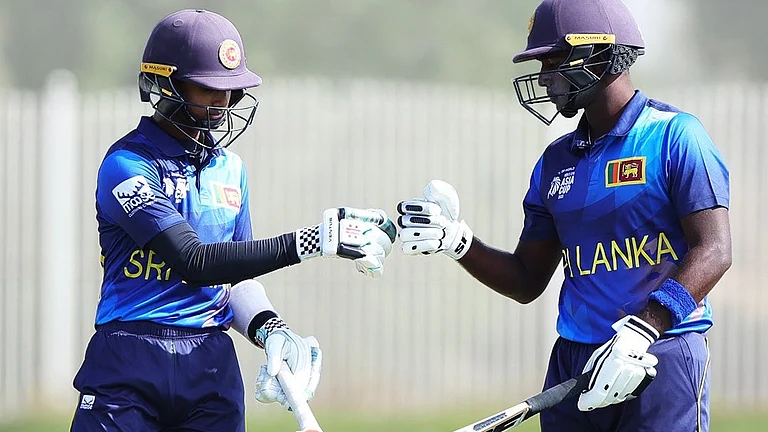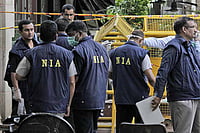Who will fly the Maharaja? And will the management of India's premier international carrier go into foreign hands? Last fortnight, as the nda government announced its intentions of disinvesting in Air-India after the pro- and anti-liberalisation spat was decided in the former's favour, top international airline companies took immediate notice. Even though the airlines maintained publicly that they were "studying the proposals", it is clear that by the time the policy actually gets on the ground, there will be a slew of bidders wanting a place under the Air-India sun.
Preliminary indications suggest that Singapore International Airlines (SIA) is the front-runner in the bid for equity stakes. Even though SIA has over the last five years been stymied in its efforts to break into the Indian market via a stake in a domestic airline, the airline has clearly not given up. "We are waiting to see the terms of the privatisation of Air-India before we can comment," is the terse one-liner from an SIA spokesman. For good measure, he adds that the Indian government had yet to make a "detailed" announcement in the matter.
The details made available by the minister of disinvestment Arun Jaitley makes it a jolly good offer as well. Under the new terms of endearment, foreign airlines would be allowed to own up to 26 per cent of the loss-making carrier. The Indian government would retain 40 percent of the flag carrier while the rest would be open to ownership by domestic private airlines of India, financial institutions, retail investors and AI employees under the employees' stock option plan. And all this in what is regarded as one of the fastest-growing and lucrative markets in the world.
The crucial issue here remains the bidder for the 26 per cent equity that can be picked up by a foreign airline. Who apart from SIA could be considered in the race? Well-placed sources say other likely bidders include Air France, Emirates, Swiss Air, Malaysian Air and Cathay Pacific. In fact, the list could well turn out to be longer. In a constantly changing commercial aviation scenario - where major airlines are tying up strategic ententes leading to cartelisation - it could be difficult to say who your partner ultimately would be.
The AI-Virgin Air accord is a case in point. Says one airline executive: "SIA has already made an indirect entry into the Indian market. No sooner had Air-India tied up with Richard Branson's Virgin Air, SIA bought 49 per cent shares in Virgin. So the foothold that SIA was seeking in India has already been obtained, albeit obliquely." In 1995-96, SIA had tried to tie up with the Tata group to form a domestic airline to exploit a market everyone wants to invest in. The ambitious bid was thwarted in a series of starts and stops by the Indian government.
Even as the excitement about disinvestment hots up, premier airlines are playing it close to the chest. Asked to comment, Lufthansa, another big force in the region, said very little: "The disinvestment policy with regard to AI has only just been announced. We are still studying the same and would not be in a position to comment at the present moment." United Airlines, one of the big American players, was a little more forthcoming, but not direct: "United is committed to the Indian market. The airline has just announced the resumption of the round-the-world service from April 2001, which will be routed via Delhi. This will link India, both east- and west-bound, to the US via Hong Kong and London."
That United, like most other international carriers, could be looking at juicy bilaterals which AI has inadvertently lost over the years through a series of illogical management decisions is clear. Said its statement: "The airline continues to look at the possibility of direct non-stop services between Delhi and Chicago, although no firm plan exists yet for this service." As for their Indian plans, United maintains it did not have any immediate plans to invest in an Indian carrier. "Our current investment plans focus on our service and product to enhance our customers' travel experience and the expansion of our route network," the statement adds.
The first step in the disinvestment direction has already been taken. As per policy, AI will advertise for a global advisor, whose job it will be to 'advise and assist' the carrier's disinvestment process. The advertisement will come after an inter-ministerial group comprising the finance minister, the disinvestment department, and representatives of Air-India and the civil aviation ministry formally puts its seal on the process. The global advisor could be assisted by a clutch of top-notch financial consultants. Among the names bandied about are PriceWaterhouse Coopers, Jardine Fleming, anz Grindlays and Hongkong and Shanghai Bank, among some other top companies.
And what about the Indian partner in these operations? Aviation watchers say that Naresh Goyal's Jet Airways may turn out to the main bidder in the Indian segment. Being the only Indian aviation company to survive the open skies boom of the early '90s, Jet has prospered over the years. With a total fleet of 30 planes, it is the closest challenger yet to the government-owned Indian Airlines. In addition, Jet's strong connection with some prominent West Asian airlines makes it an important player to watch.
But aviation analysts say the problems may just have begun, because apart from the lucrative market, managing and turning around a loss-making airlines is a formidable task. Apart from accumulated losses of approximately Rs 444 crore in the last three years, Air-India has lost a number of its lucrative routes to faulty bilaterals, the aircraft utilisation is a poor 50 per cent against a healthy 70 per cent or higher for top international airlines, and the general morale is not too high. But over and above all this is the question of retrenchment that any new management will have to address. Says aviation analyst Brij Bhardwaj: "Unless you have a proper pruning of staff, for anyone to turn this airline around will be a difficult job."
The reasons are not far too seek. Air-India, with a total staff strength over 17,800, has an unusually high average of 686 employees per aircraft, way above any other international airline. So what happens to the staff? Says Jitendra Bhargava, who heads Air-India's public relations: "What people forget is that unlike other airlines, we do not hire outside agencies to do our cargo, airport handling, chef services and connected activities. All these people are AI employees so the numbers look big." So could a future voluntary retirement scheme (vrs) become a liability? No, says Bhargava, who adds that the staff morale after the disinvestment plan is very high.
Does the AI management then go into foreign hands? Disinvestment minister Jaitley told reporters that while details of management control would be worked into the shareholders' agreement, since 40 per cent of the equity was earmarked for strategic partners out of which 26 is the maximum equity that could be held by a foreign airline, a minimum of 74 per cent of the company's equity would be with Indians at any given point of time. Privately, analysts say there is a good chance of the management being retained by the foreigner who invests "as there seems no way other than to put the airline back on the rails".
Says a source: "Disinvestment by its very definition would mean a complete turnabout. The management will have to change and the company run like a private business. There would have to be vrs, no unnecessary meddling by politicians, a policy of hire-and-fire and taking outsider assistance as the situation demands." According to him, the very fact that the foreign equity participation has been put at 26 per cent and not 25 would take them out of the ambit of Companies Act, meaning that the arbiter is not the Company Law Board but the courts. Clearly, the battle for Indian skies has begun. At a time when a number of international aviation companies, particularly in the Southeast Asia hub, are up for sale, the privatisation of aviation, an unimagined situation a decade ago in India, is on its way.


























